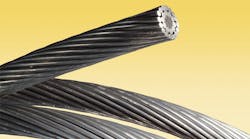Prices have risen steadily over the past three years due to volatility in demand from the construction sector and competition from lower-cost imports. For these reasons and to help procurement professionals make better buying decisions faster, business intelligence firm IBISWorld has added a report on the procurement of electrical cable to its growing collection of procurement category market research reports.
Electrical cable has a buyer power score of 2.9 out of 5. This score indicates that neither buyers nor suppliers command an overwhelming amount of leverage when it comes to negotiating supply contracts. Demand for electrical cable is tied to construction activity, particularly infrastructure, commercial, industrial and utilities building. Residential construction also fuels demand for electrical cable used to connect homes to high-speed internet and cable television networks. “Over the past three years, the construction sector has been volatile, with significant year-over-year swings in activity,” says IBISWorld procurement analyst Sean Windle. “With the construction sector yet to fully recover and heavy price competition with low-cost imports, price growth has been fairly steady, bolstering buyer power.”
Low product specialization also benefits buyers. “Because the electrical cable products produced and sold by different suppliers are fairly uniform across the market, vendors look to differentiate themselves based on other factors, such as price,” adds Windle. “Additionally, low market share concentration among suppliers means buyers have a plethora of vendor options from which to choose when sourcing electrical cable.” Large-scale manufacturers, such as General Cable Corporation and Belden Inc., are generally able to maintain better control over input costs due to their relationships with a number of different suppliers. In addition, the cost advantages large-scale manufacturers enjoy allow them to lower production costs, which can result in a more competitive price for buyers.
While buyers benefit from low market share concentration, high competition and steady and predictable price growth, other factors limit buyer power. No substitute products exist for electrical cable. Substitute materials, such as aluminum, can provide a cheaper alternative to copper; however, these cost savings are often limited in scope and are often offset by lower performance characteristics.
Over the next three years, the construction sector's recovery is forecast to gain momentum, driving up demand for electrical cable and pushing prices upward. While price growth will accelerate, the prices of copper and other raw materials are expected to exhibit much less volatility over the next three years. In fact, copper prices are anticipated to fall steadily from 2013 to 2016. These factors will keep price growth relatively steady over the next three years; however, buyers are encouraged to lock in current rates now before prices rise.



